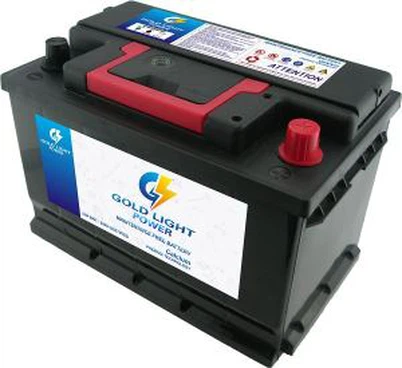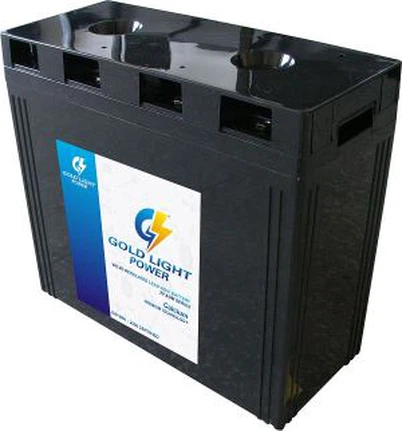What is the self - discharge rate of a Gel Battery?
Leave a message
Hey there! As a supplier of Gel Batteries, I often get asked about the self - discharge rate of these batteries. So, I thought I'd take some time to break it down for you all.
First off, let's understand what self - discharge is. Simply put, self - discharge is the process where a battery loses its charge over time, even when it's not being used. It's like having a leaky bucket; no matter how much you fill it up, it'll gradually empty on its own.
For Gel Batteries, the self - discharge rate is an important factor to consider. Gel Batteries are a type of Valve - Regulated Lead - Acid (VRLA) battery. They have a gel - like electrolyte, which gives them some unique properties compared to other types of batteries.
One of the great things about Gel Batteries is that they generally have a relatively low self - discharge rate. This is because of the way the gel electrolyte works. The gel helps to reduce the internal chemical reactions that cause self - discharge. Unlike some other battery types, Gel Batteries can hold their charge for longer periods, which is super useful if you're not using the battery regularly.
Typically, the self - discharge rate of a Gel Battery can vary depending on a few factors. Temperature is a big one. Batteries are sensitive to temperature, and Gel Batteries are no exception. In higher temperatures, the self - discharge rate increases. This is because heat speeds up the chemical reactions inside the battery, causing it to lose charge more quickly. On the other hand, in colder temperatures, the self - discharge rate slows down. But be careful, extremely cold temperatures can also affect the battery's performance in other ways.
Another factor that affects the self - discharge rate is the age of the battery. As a Gel Battery gets older, its internal components start to degrade. This can lead to an increase in the self - discharge rate. Newer Gel Batteries usually have a lower self - discharge rate, which means they can keep their charge for longer right out of the box.
The quality of the battery also plays a role. High - quality Gel Batteries, like the ones we supply, are designed with better materials and manufacturing processes. This helps to keep the self - discharge rate as low as possible. Cheaper or lower - quality Gel Batteries may have a higher self - discharge rate, which means you'll have to recharge them more often.
So, what's a typical self - discharge rate for a Gel Battery? Well, on average, a Gel Battery can self - discharge at a rate of about 1 - 3% per month under normal conditions (around 20 - 25°C). That means if you have a fully charged Gel Battery, after a month, it'll have lost between 1 and 3% of its charge.
Let's say you're using a Gel Battery for a solar power system. You want the battery to store the energy generated by the solar panels during the day and then use it at night. A low self - discharge rate is crucial here. If the battery self - discharges too quickly, you'll lose a lot of the stored energy, and you won't have as much power available when you need it.
For example, our 12V24AH Solar Battery Sealed GEL Battery Standard Vrla Products and 12V38AH Solar GEL Battery Standard Storage Battery Products are designed with a low self - discharge rate in mind. These batteries are great for solar applications because they can hold their charge for a long time, ensuring that you have a reliable source of power.
If you're using Gel Batteries in an emergency backup system, the self - discharge rate is also important. You want the battery to be ready to go when there's a power outage. A low self - discharge rate means that the battery will still be charged and ready to provide power when you need it most.
Now, how can you manage the self - discharge rate of your Gel Battery? One thing you can do is to store the battery in a cool, dry place. As I mentioned earlier, temperature has a big impact on the self - discharge rate. Keeping the battery at a moderate temperature can help to slow down the self - discharge process.
You should also make sure to recharge the battery regularly. Even though Gel Batteries have a low self - discharge rate, they still need to be recharged from time to time. This helps to keep the battery in good condition and ensures that it has a full charge when you need it.


If you're thinking about buying Gel Batteries, it's important to choose a reputable supplier. We've been in the business for a while, and we know how to produce high - quality Gel Batteries with a low self - discharge rate. Our batteries are tested thoroughly to make sure they meet the highest standards.
In conclusion, the self - discharge rate of a Gel Battery is an important characteristic to consider. A low self - discharge rate means that the battery can hold its charge for longer, which is great for a variety of applications, from solar power systems to emergency backup. If you're interested in our Gel Batteries or have any questions about the self - discharge rate, don't hesitate to get in touch for a procurement discussion.
References:
- Battery University: A well - known source for battery - related information.
- Various industry reports on Gel Battery technology.





